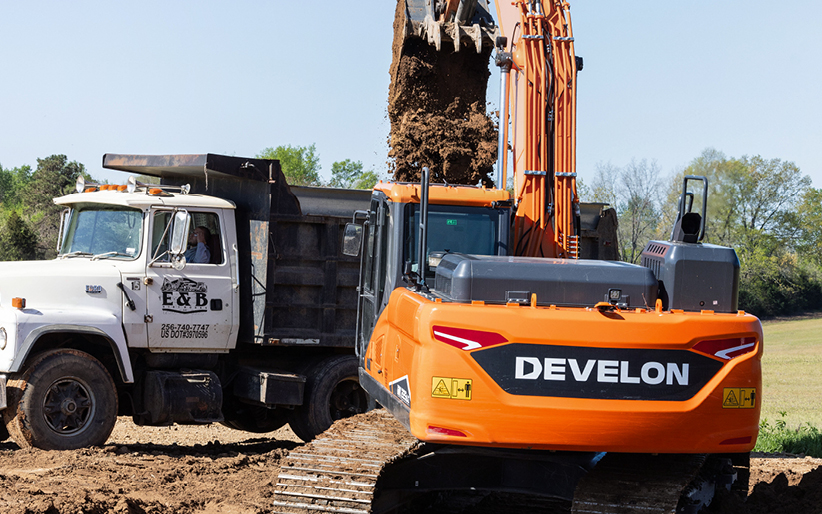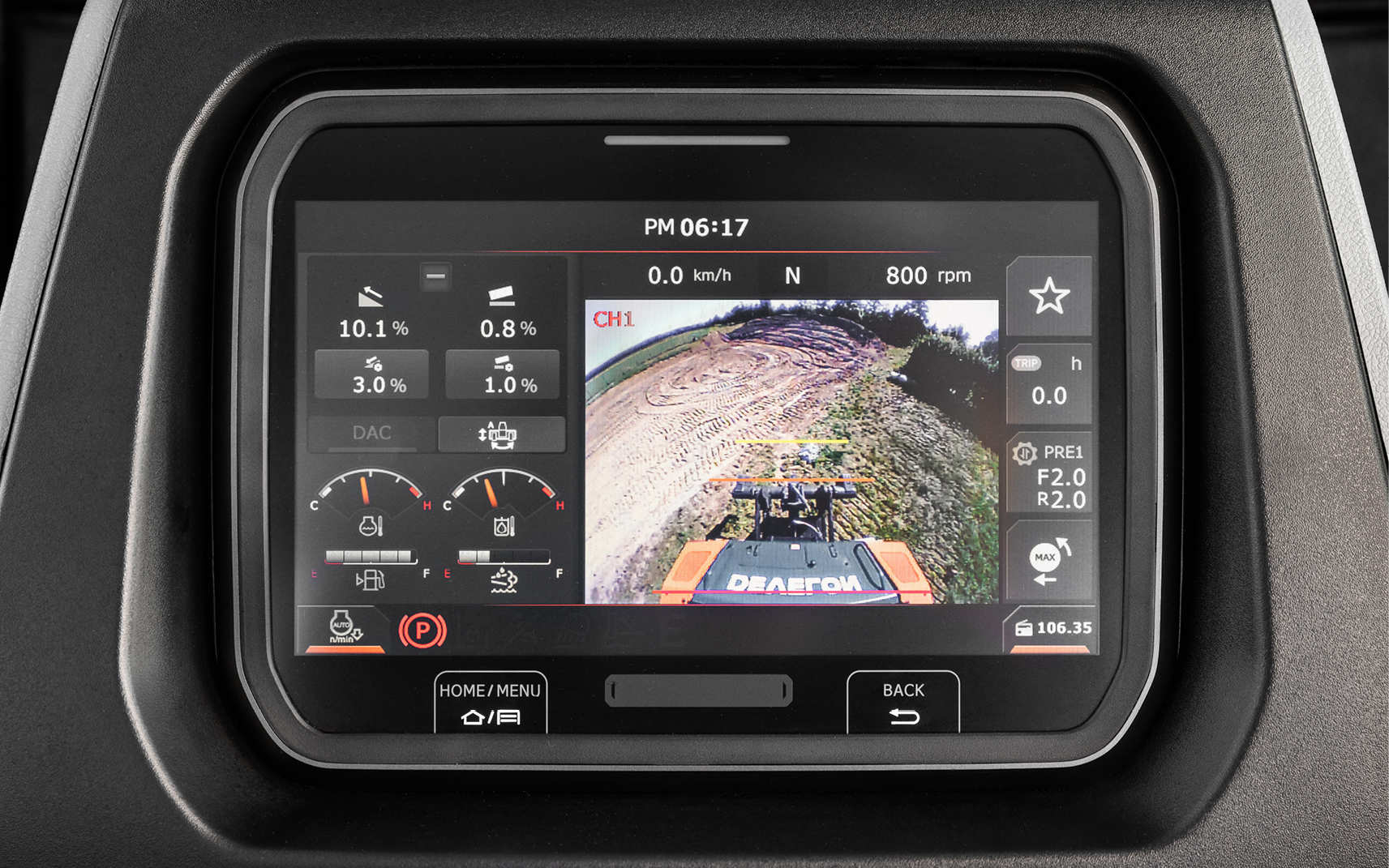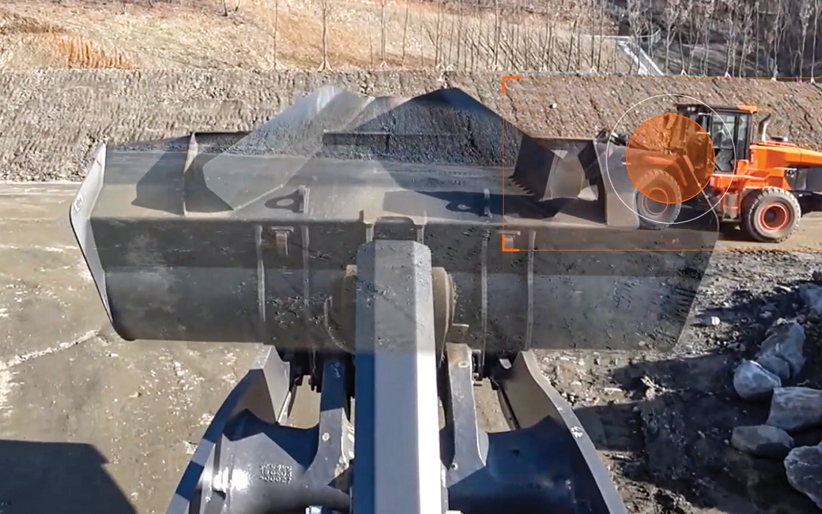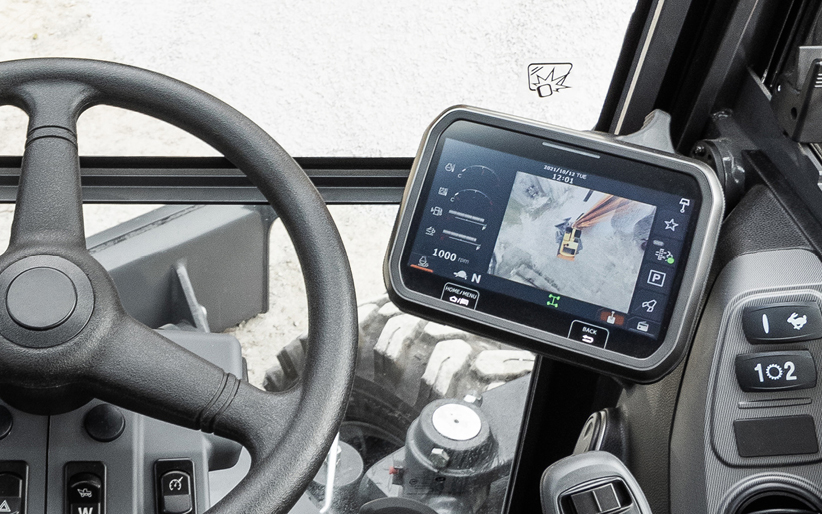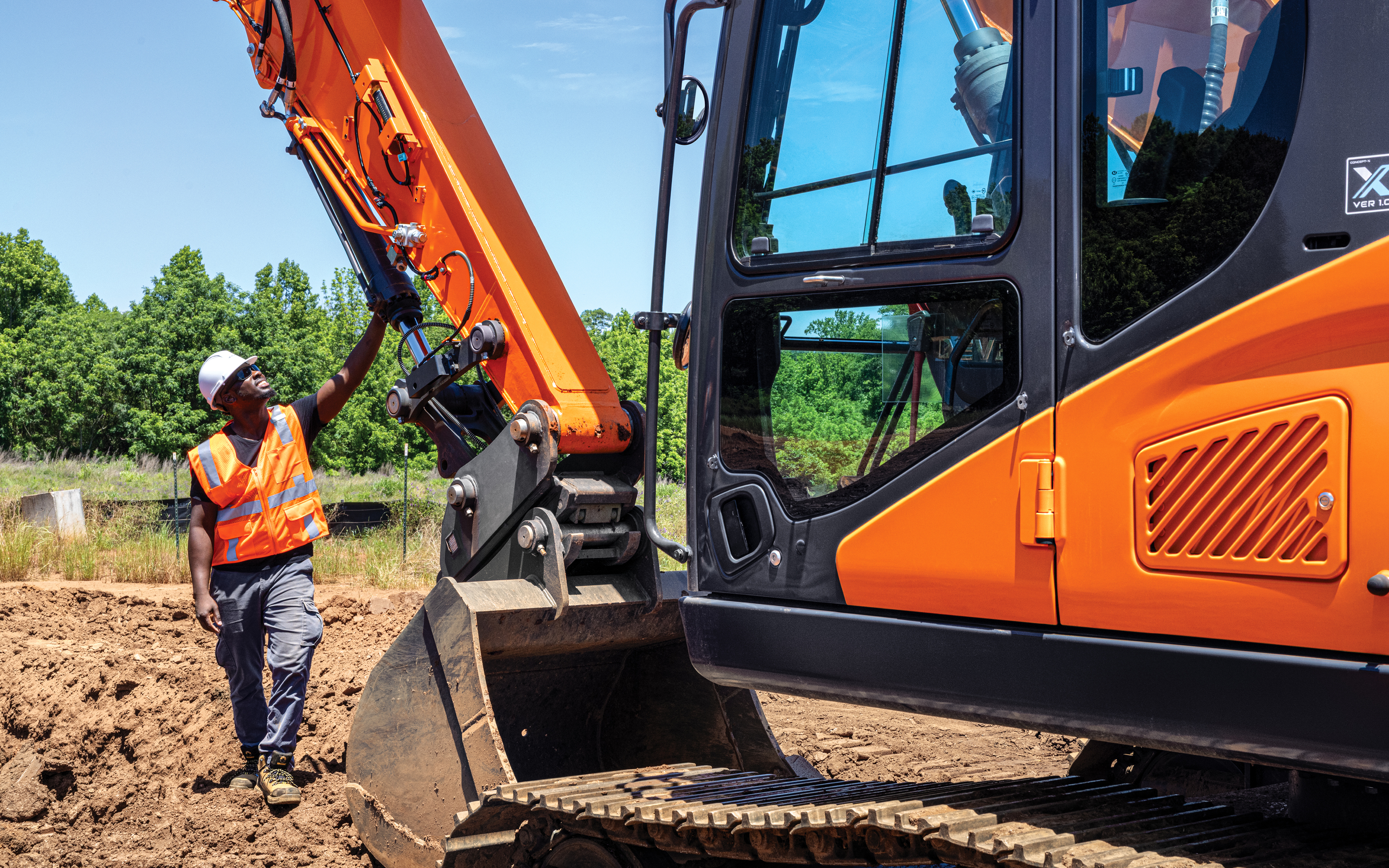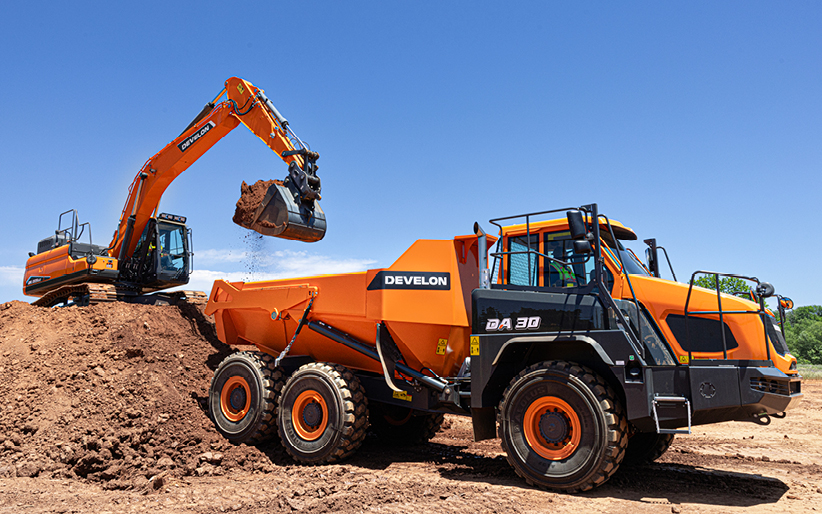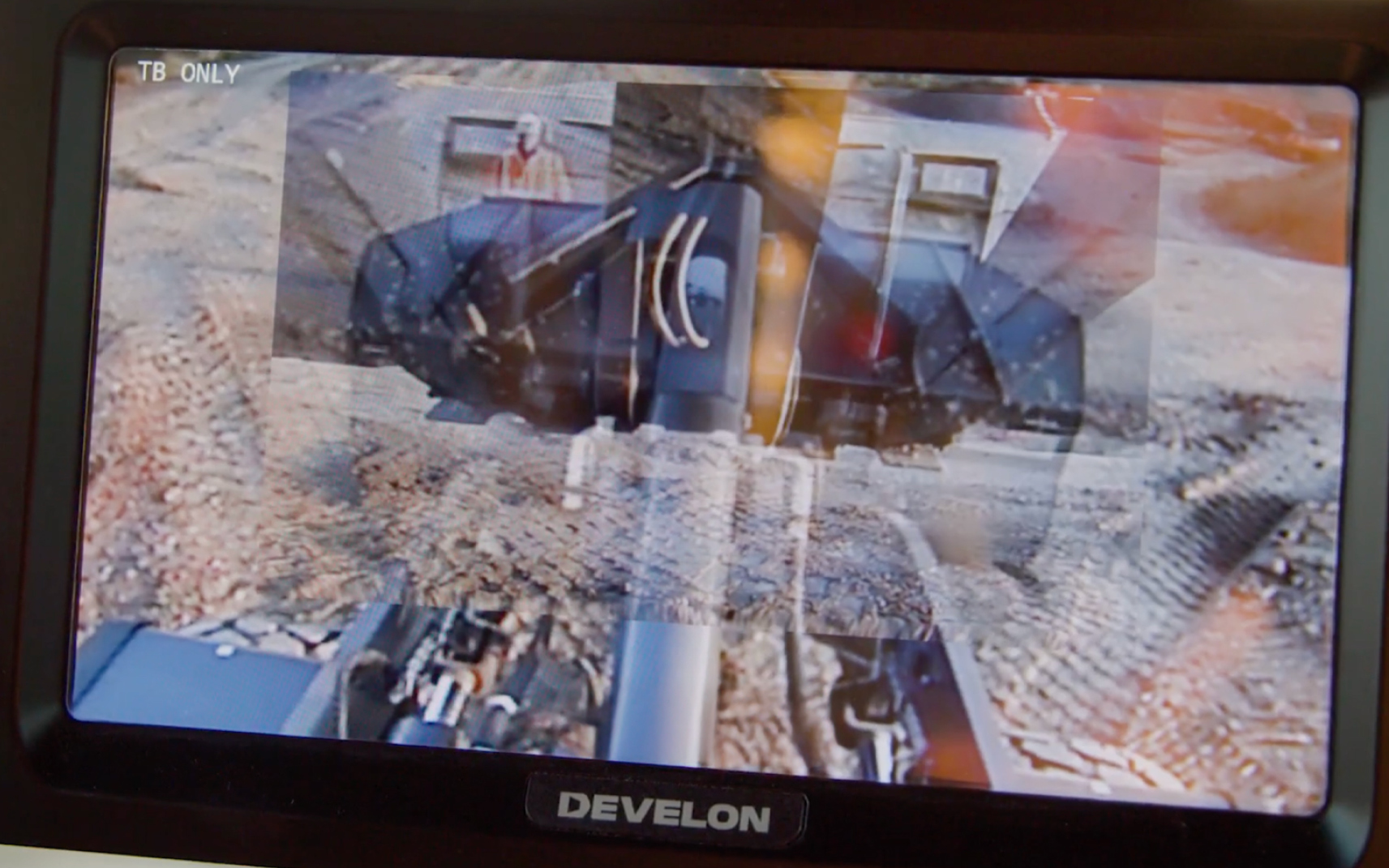One of the most significant challenges in construction is mitigating heavy equipment hazards. The good news is that advanced technology is increasingly enhancing heavy equipment safety.
While the construction industry has historically been prone to accidents and injuries, manufacturers are taking steps to minimize the risk. Advanced safety features are revolutionizing the industry, protecting heavy machinery operators and workers and increasing efficiency. This technology is replacing older methods of communication on job sites, including hand signals between workers.
Here are five of the latest machine features for heavy construction equipment operators and how they can move the industry toward increased safety.
Standard Heavy Equipment Safety Features
Let’s start with the basics. Today’s construction equipment is designed with standard safety features aimed at protecting operators. Specific features may vary based on equipment type and model; many common safety features are available on modern machines.
Operator protection in construction equipment, including wheel loaders, excavators, dozers and articulated dump trucks, include rollover protective structures (ROPS) and falling object protective structures (FOPS). These structures are essential for protecting operators from rollovers and falling objects.
Seatbelts fastened to ergonomic seats are recommended during operation. Construction equipment seats are designed to reduce operator fatigue and discomfort.
Today’s cabs minimize outside noise levels to protect operator hearing. The cabs also provide a comfortable operating environment.
While these standard safety features are readily available today, companies are introducing advanced safety features.
Rearview and Side View Cameras Expand Sightlines
Many of us use rearview cameras in our cars and trucks. This technology is now standard in most construction equipment too, enhancing operator visibility to the area behind the machine.
Side view cameras further enhance operator visibility and minimize blind spots by providing additional views to the side of excavators. Excavator operators can activate the side view camera and combine it with the rearview camera. A side-by-side view is available on the LCD screen inside the cab.
Combining the rear and side views, operators have a wider field of view, can better assess their surroundings and can make more informed decisions.
Transparent Bucket Offers ‘See-Through’ Views
Operating a wheel loader can be difficult at times, especially when operators are carrying objects in a raised bucket or when they’re loading and unloading materials. Our “see-through” Transparent Bucket makes operating a wheel loader safer in these situations.
How it works: A second display monitor in the cab provides an obstructed view of what’s in front of the bucket. This is accomplished by the use of two cameras, one mounted high and the other low. The camera feeds are combined into one view for enhanced visibility, minimizing blind spots.
The Transparent Bucket is a DEVELON-exclusive technology that comes standard on all new -7 Series DEVELON wheel loaders.
For even more on the subject of safety tech, check out this blog about CES 2024 and future safety innovations.
Around View Monitor Systems Increase Visibility
An advanced safety feature available for high visibility in heavy equipment is an around view monitor (AVM) camera system. As the name suggests, the system provides operators with greater visibility working around heavy equipment. In some wheel loaders and compact track loaders it’s up to 270 degrees, and in excavators, it’s up to 360 degrees, for a bird’s-eye view of the equipment and the surroundings.
Adding an AVM camera system to equipment can reduce the risk of accidents involving workers, other equipment or nearby structures. It also reduces operator stress when working on busy job sites where there are numerous construction workers or machines working nearby.
Operators can improve maneuverability in a machine equipped with an AVM camera system. They can more easily navigate a busy construction site.
An AVM camera system can also contribute to increased job site productivity because operators are able to work more efficiently and confidently.
Damage to machines can be minimized because operators have a clear view of potential obstacles, lowering the cost to replace machine parts while keeping equipment functional and looking nice.
Object Detection System Senses Nearby Obstacles
Collisions between pieces of equipment are a leading cause of accidents. The next generation of safety features for operating heavy equipment includes object detection systems.
Using ultrasonic proximity sensors, the system alerts operators to potential hazards in their path or near the machine. Mounted on the machines, the sensors alert excavator and wheel loader operators when objects get too close to the machines. A colored box will appear around the in-cab touch screen.
- Red: An object is within 0 to 4 feet.
- Yellow: An object is within 4 to 8 feet.
- Green: An object is within 8 to 12 feet (safe zone).
In addition to the colored boxes, an audible alarm will alert the operator when an object is too close to the machine.
Practical Advice for Operators
It’s important to prioritize safe operations on construction job sites. This technology is intended to complement operator training and safety guidelines available in the owner’s manual.
Operators should still wear personal protective equipment (PPE) whenever they are working on a job site. It’s recommended that they maintain three points of contact when mounting and dismounting the machine. Always follow equipment safety tips outlined in the owner’s manual.
Want more on operator safety and staying safe around heavy equipment? Learn four job site tips every operator should know.

By Thomas Lee, Product Strategy Manager
Thomas Lee is a product strategy manager at DEVELON. He has more than 15 years of experience working in the heavy equipment industry and leads the product management team for all heavy products.

